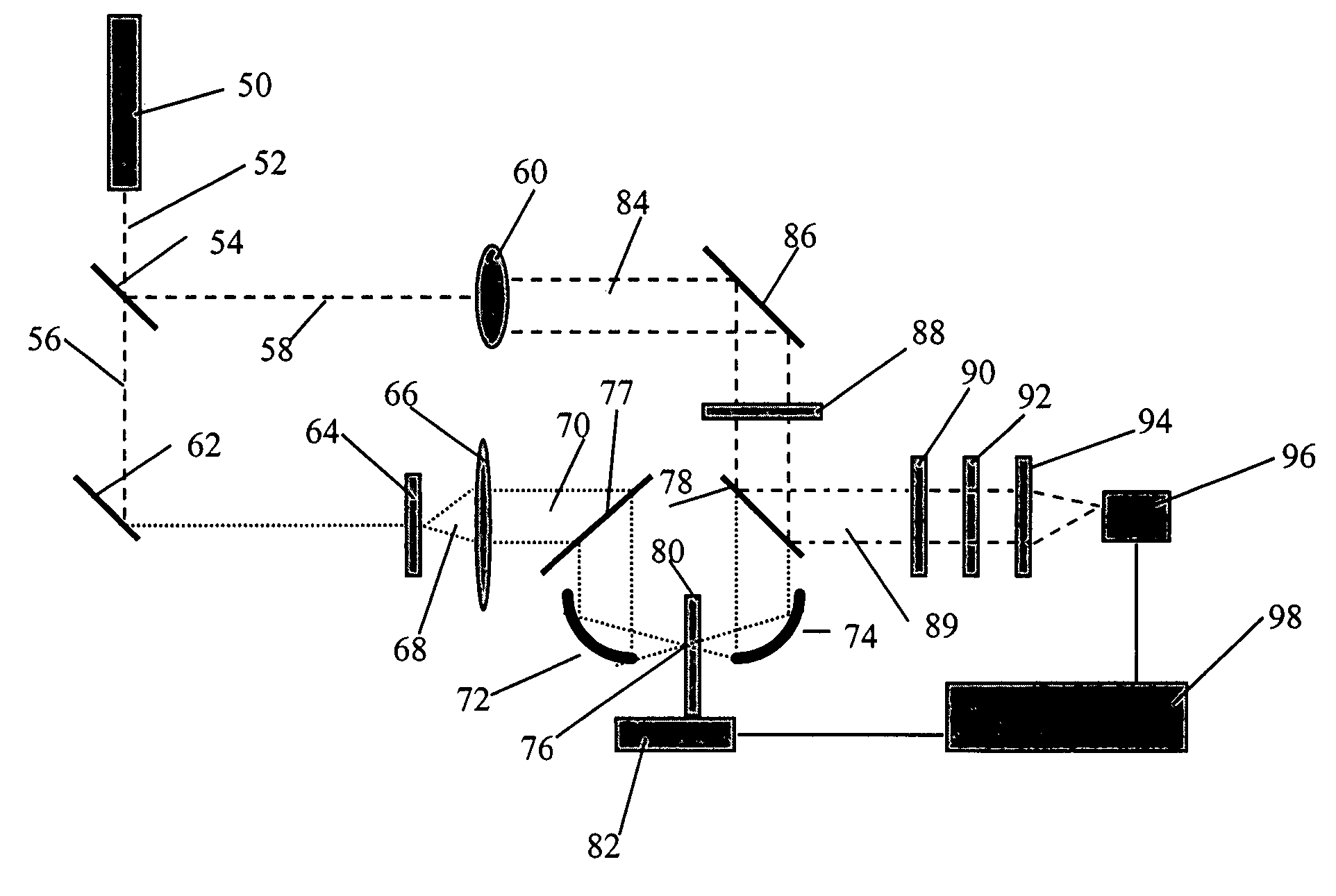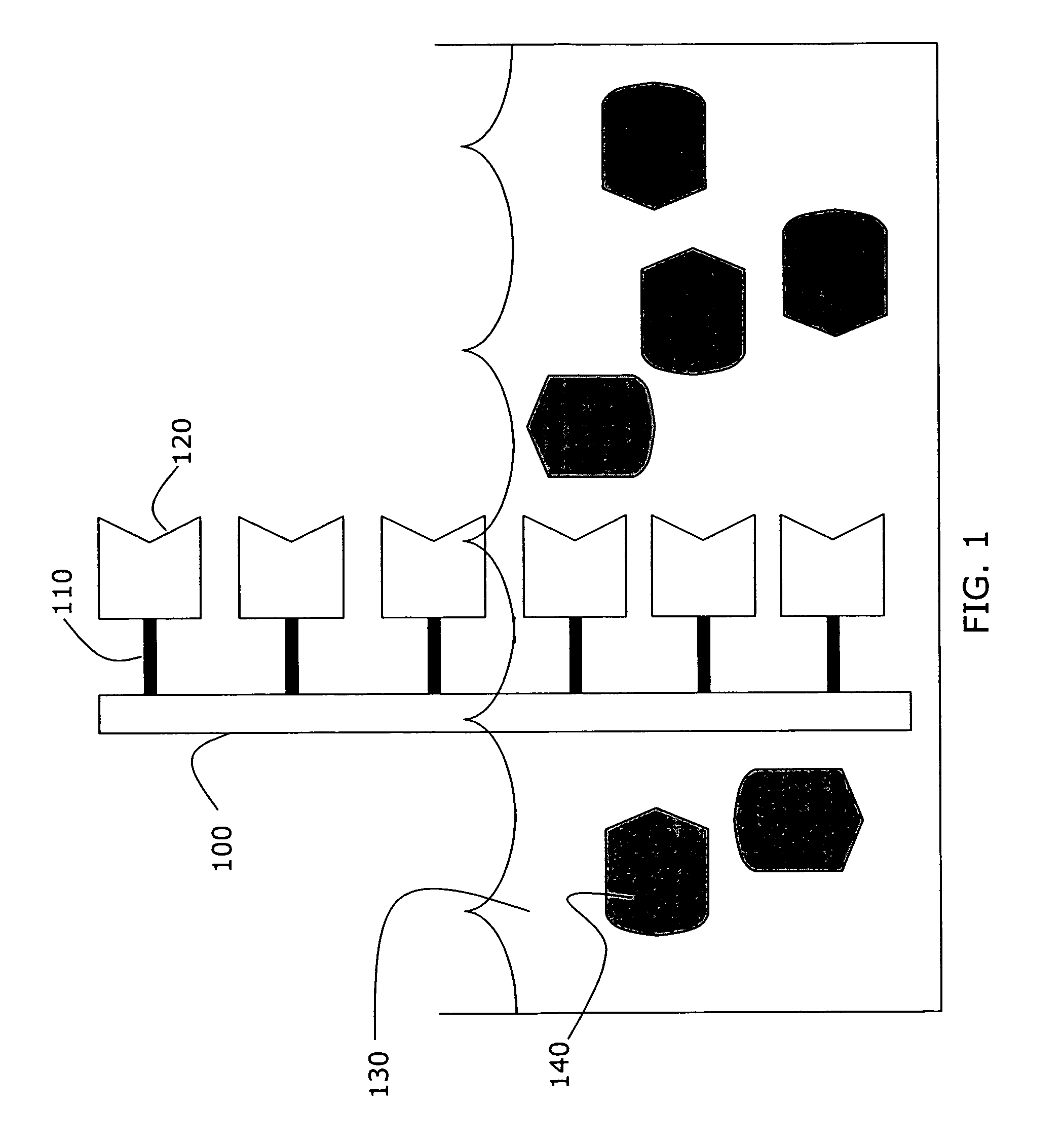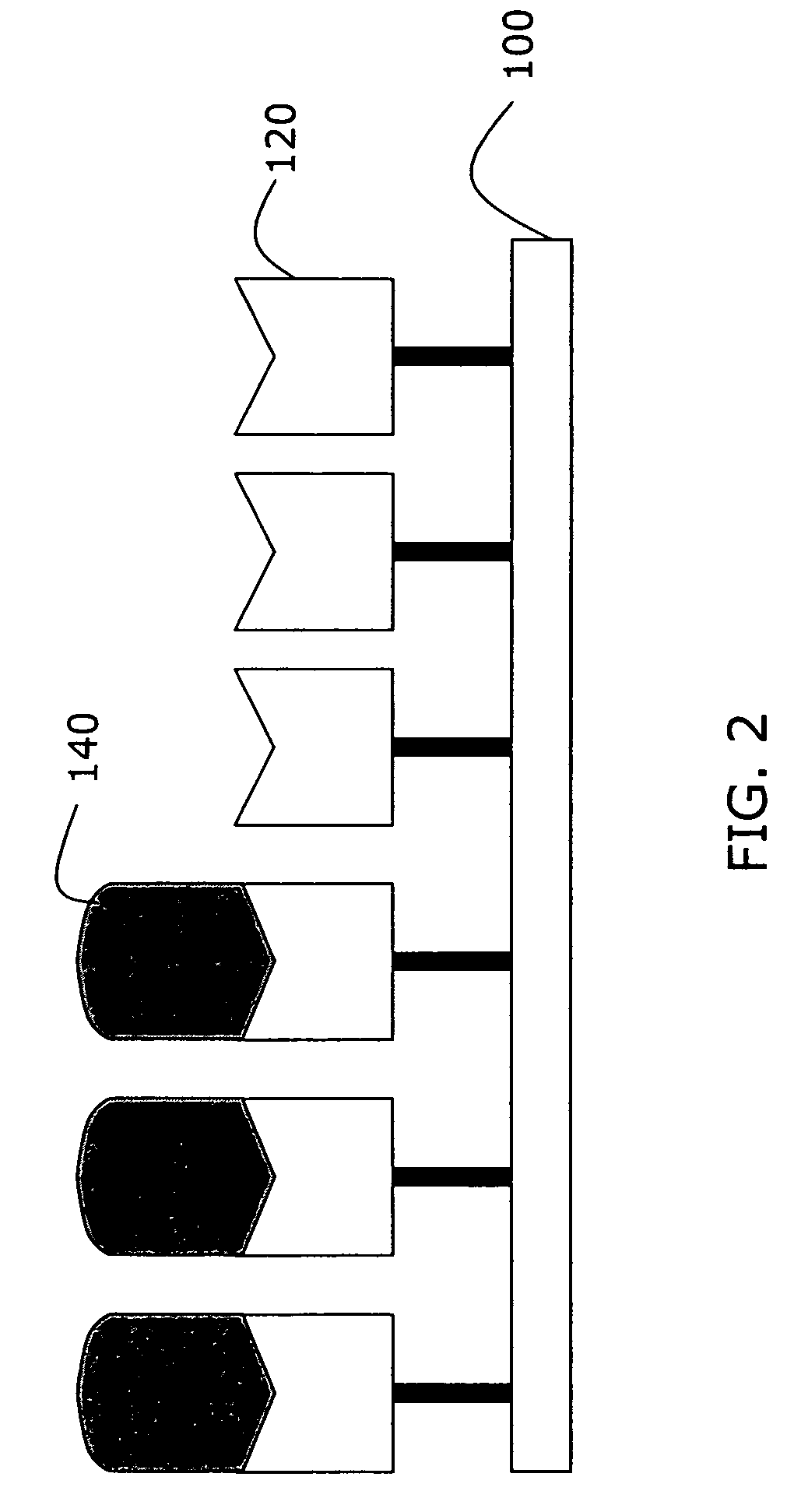Detection of biospecific interactions using amplified differential time domain spectroscopy signal
a time domain and signal technology, applied in the field of bioanalytical technology, can solve the problems of disturbing the sample, requiring extra steps in sample preparation, and not being able to achieve the effect of simple bioassay procedur
- Summary
- Abstract
- Description
- Claims
- Application Information
AI Technical Summary
Benefits of technology
Problems solved by technology
Method used
Image
Examples
example 1
[0043]In an example of the present invention, the binding between the eggwhite glycoprotein, avidin, and vitamin H, biotin was detected by differential time domain THz spectroscopy. Avidin is a known protein characterized by its four identical binding sites for biotin. In this example, biotin is the tethered molecule, and is non-covalently attached to the support surface.
[0044]Prior to biotin deposition, the quartz slides were cleaned in 50% hot nitric acid for an hour, and then rinsed thoroughly in double distilled water. The quartz slides were further subjected to 1 mg / ml octadecanol solution for half an hour. The hydrophobic substrate was immobilized on the hydrophilic surface through molecular self-assembly. The spontaneous organization of the biotin lipid into the octadecanol self-assembled bilayers provides a certain level of stability to the octadecanol-biotin complexes.
[0045]After drying and washing the octadecanol-treated slides with double distilled water, the sample was d...
example 2
[0048]Similar results were achieved by securing avidin to the slide surface and exposing a portion of the avidin-treated slide to a solution of biotin. In this case, avidin was the tethered molecule, and was covalently attached to a glass slide. The procedure for covalent immobilization of avidin on glass slides included treating the surface of the glass slides with thiol-terminal silanes and a succinimde crosslinker. This treatment increased the density of bound avidin on the glass slides. See also S. Mickan, A. Menikh, J. Munch, D. Abbott & X.-C. Zhang, “Amplification and modeling of bioaffinity detection with terahertz spectroscopy,” Proceedings of SPIE—Biomedical Applications of Micro- and Nanoengineering, SPIE Vol. 4937, pp. 334-42 (Dan Nicolau ed., Melbourne, Australia, Dec. 16-18, 2002), the contents of which are incorporated in this document by reference.
[0049]In preparing the sample slide, the glass slides were cleaned, silanized, and crosslinked prior to deposition of the ...
example 3
[0055]A biotin-coated slide was prepared as in Example 1, and a portion of the slide was exposed to a solution containing avidin conjugated to agarose beads, as illustrated in FIG. 3. Agarose beads 340 bound to several avidin molecules 330 provided a greater change in the index of refraction upon binding to the tethered biotin molecules, thus amplifying the resulting difference signal detected through THz spectroscopy. The signal amplification caused by the agarose beads is apparent in FIG. 4, as the biotin-avidin-agarose signal 420 is approximately 35% greater than the unenhanced biotin-avidin complex.
PUM
| Property | Measurement | Unit |
|---|---|---|
| thick | aaaaa | aaaaa |
| thickness | aaaaa | aaaaa |
| thickness | aaaaa | aaaaa |
Abstract
Description
Claims
Application Information
 Login to View More
Login to View More - R&D
- Intellectual Property
- Life Sciences
- Materials
- Tech Scout
- Unparalleled Data Quality
- Higher Quality Content
- 60% Fewer Hallucinations
Browse by: Latest US Patents, China's latest patents, Technical Efficacy Thesaurus, Application Domain, Technology Topic, Popular Technical Reports.
© 2025 PatSnap. All rights reserved.Legal|Privacy policy|Modern Slavery Act Transparency Statement|Sitemap|About US| Contact US: help@patsnap.com



